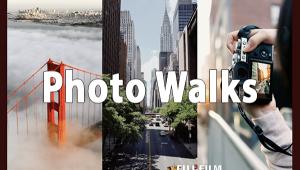Sigma 4.5mm f/2.8 EX DC HSM (Motor-in) Lenses
 |
|
|
The fisheye look is an acquired taste, albeit one that has an immediate seductive quality. While you can correct some of the inherent distortion using various programs, the point is not to create a "straight" image with a very wide angle of view but to enjoy the ride of this "beyond peripheral vision" optic. There are two types of fisheye--one rectilinear, with the standard rectangular frame and less angle of view--and the other hemispherical, the type featured in the new lens from Sigma.
One of the truly amazing qualities of the fisheye is the almost ridiculous depth of field available at even modest apertures. As you know, one of the determinants of depth of field is the focal length of the lens, and when you use either a 10mm or 4.5mm focal length (with a minimum close focusing distance of 5.3 inches in both lenses) at even f/8 you get sharpness from 3 feet to infinity with ease. Add the amazing amount of foreshortening these lenses afford (the seeming enlargement of close subjects when focused close in relation to the distant background) the picture possibilities are fairly mind boggling.
Surreal Scenes |
|
 |
|
|
The 4.5mm f/2.8 lens (MSRP $1400, less in many outlets) is said by Sigma to be the first 180-degree circular fisheye made specifically for APS-C digital SLRs, and the HSM (motor built into the lens) opens this up for users of those cameras without built-in lens motors, such as the Nikon D40x used in this test. Yielding a 180 degree angle of view, the unit is fairly small (3 x 3.1 inches) and light weight (about 16 oz.) Available in Canon, Nikon and Sigma mounts, it's constructed of 13 elements in 9 groups. Being of the DC variety, it utilizes SLD (special low dispersion) glass and is super coated to minimize ghosting and flare.
The City at Night |
|
 |
|
|
I can attest to that flare-reducing quality as I shot with the lens mostly at night in and around NYC's Times Square, a bizarre area that to me matches up perfectly with the fisheye experience. I worked in a range of ISO 400 to 800 and never had to worry about shake due to the fast f/2.8 max aperture.
The framing certainly is interesting: in fact, if you shoot straight ahead with the 4.5mm lens, watch out for your shoes appearing in the bottom of the frame!
Looking Up, and Rectangular
Crop |
|
 |
|
 |
|
|
The full report on two new Sigma fisheye lenses, including a 10mm version, will appear in an upcoming issue of Shutterbug.
Contact: www.sigmaphoto.com

















































